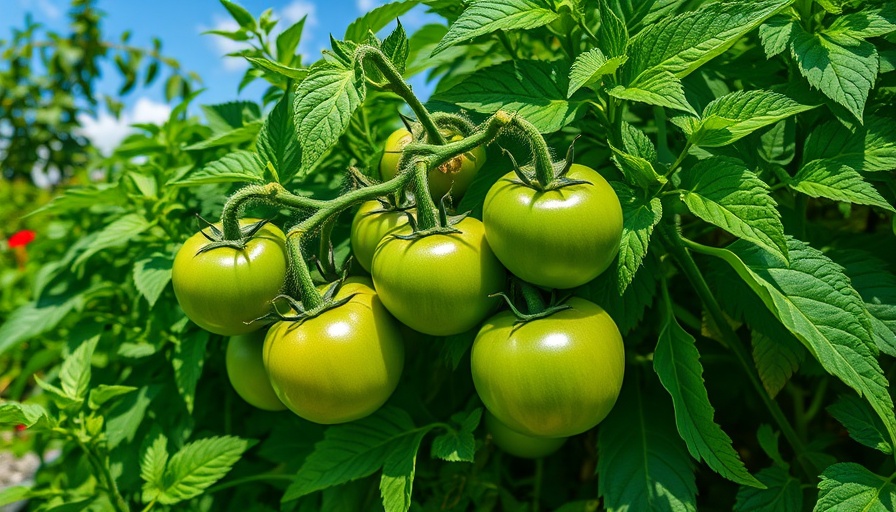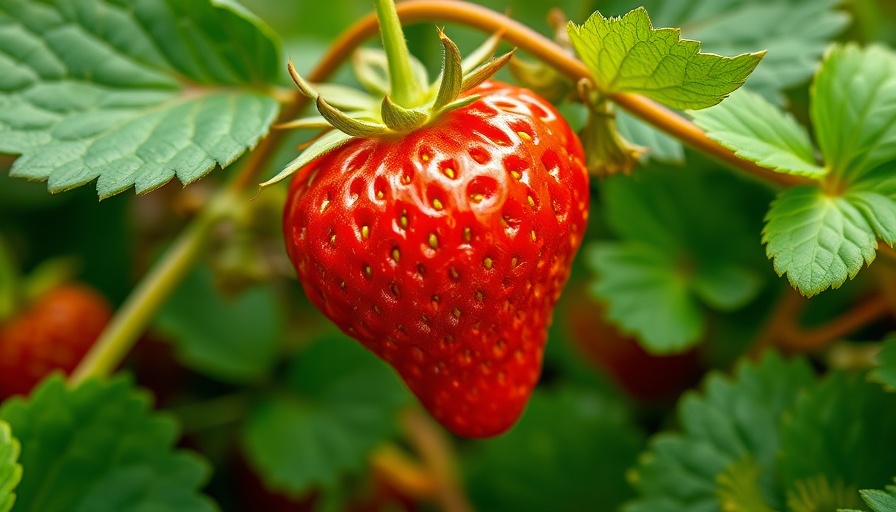
Discovering the Garden Benefits of Molasses
The humble molasses, often relegated to the pantry, has emerged as a hot topic among gardeners. Recent discussions, including insights from an engaging video titled Why Gardeners Are Adding Molasses to EVERYTHING!, highlight the potential benefits of incorporating this sticky substance into gardening practices. As gardeners in the Okanagan work diligently to cultivate their plants, let's explore how molasses can enhance soil health, improve composting, and even control pests, while also examining potential pitfalls.
In the video, Why Gardeners Are Adding Molasses to EVERYTHING!, the discussion dives into the various uses of molasses in gardening, sparking interest in its potential benefits and drawbacks.
The Microbial Boost: How Molasses Can Transform Your Soil
One of the key claims around molasses is its ability to invigorate soil by increasing microbial activity — a game-changer for gardeners. According to Ashley, the host of the aforementioned video, adding just one teaspoon of molasses to a gallon of water can significantly enhance microbial biomass carbon, providing a buffet for beneficial microorganisms. This effect promotes nutrient cycling, making essential elements like nitrogen and phosphorus more bioavailable to plants. It’s a simple practice with potentially substantial results, particularly for those gardening in less fertile soils.
Accelerating Composting Processes
Gardening in colder climates, such as in the Okanagan region, presents unique challenges, especially during composting. The video mentions that molasses can accelerate the composting process by increasing microbial activity. For gardeners looking to create nutrient-rich compost quickly, adding one teaspoon of molasses per cubic foot of compost can facilitate the growth of mesophilic bacteria essential for thermophilic composting. This means you could produce quality compost faster, helping to boost the productivity of your garden.
Natural Pest Control: Myths and Realities
For those struggling with soft-bodied pests like aphids, a molasses-based spray might offer a natural solution. Jen, a viewer inspired by Ashley's video, reported success in eliminating aphids from her tomato plants with a homemade molasses spray. While anecdotal evidence exists, it's essential to consider that no rigorous scientific studies have validated these claims for all insect types. That said, for home gardeners willing to experiment, trying molasses as an insecticide could be an interesting approach to pest management.
Be Cautious: Understanding the Potential Downsides
While there are many touted benefits, there are also risks involved in using molasses. As Ashley points out, excessive application can immobilize nitrogen in the soil, which could hinder plant growth instead of promoting it. Furthermore, its sugary nature may attract unwanted pests like ants and rodents, creating more problems than it solves. It’s crucial for gardeners to weigh these concerns against the possible benefits.
Your Garden, Your Choices: The Joy of Experimentation
Ultimately, the discussion around using molasses in gardening boils down to personal choice and experimentation. The essence of gardening is about learning what works best for your unique environment. If you're hesitant about using molasses, remember that gardening is a journey filled with trial and error. As Ashley urges, "Just go do it. See what happens." This adventurous spirit is what makes gardening not only productive but also enjoyable.
Conclusion: Dive Into the Molasses Experiment
For the Okanagan gardeners eager to try something new, molasses presents an intriguing opportunity. From boosting soil health and speeding up composting to potentially managing pests, the applications are varied and enticing. So, gather your molasses, don your gardener's hat, and embark on a little experiment in your garden. Share your experiences with molasses with your fellow gardeners — you never know what might work for you!
Feeling inspired? If you’re intrigued by natural gardening practices, stay connected for more tips and tricks tailored to Okanagan gardeners. Happy gardening!
 Add Row
Add Row  Add
Add 




Write A Comment